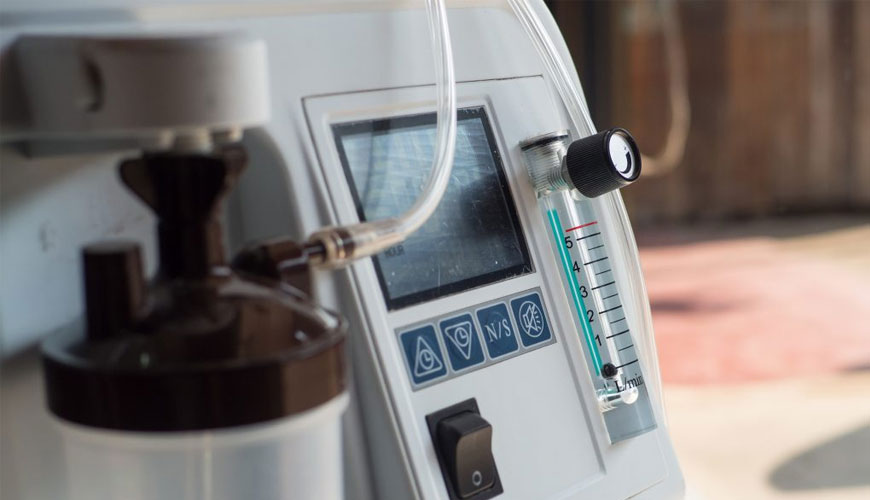

EUROLAB laboratory provides testing and compliance services within the scope of ISO 80601-2-69 standard. Developed by the International Organization for Standardization (ISO), this part of the ISO 80601 standard specifies the requirements for the essential safety and essential performance of an oxygen concentrator with its accessories, hereinafter referred to as ME equipment, aimed at increasing the oxygen concentration of the gas intended to be delivered to a single patient.

Such oxygen concentrators are typically designed for use in a home healthcare setting by a single patient in a variety of settings, including commercial aircraft as well as any private and public transport. Such oxygen concentrators can also be used in professional healthcare institutions.
This document applies to an oxygen concentrator that can and cannot be operated in transit. This document applies to an oxygen concentrator integrated into or used with other medical devices, ME equipment, or ME systems.
For example, an oxygen concentrator with integrated oxygen protective equipment function or humidifier function, an oxygen concentrator used with a flowmeter stand, an oxygen concentrator as part of an anesthetic system for use in areas with limited logistics electricity and anesthetic gas supply, and
an oxygen concentrator with integrated liquid reservoir function or gas cylinder filling system function.
Oxygen supplementation may be part of the management of patients with chronic, chronic upon chronic or acute respiratory disorders. The amount of supplemental oxygen depends on the needs of the individual patient under various conditions. The executive healthcare team typically determines the endpoint of treatment, such as a target value for oxygen saturation. The amount of supplemental oxygen can be controlled by the flow rate.
The aim of long-term oxygen therapy is to keep the oxygen saturation above the target value in patients who need oxygen support. Flow rate should be adjusted for rest, effort and sleep to meet the needs of the individual patient under these various conditions. Ideally, the resting flow rate is set to keep SpO2 greater than the target value, as indicated by the pulse oximeter.
Supplemental oxygen is supplied from a variety of sources: medical gas pipeline systems, oxygen concentrators, compressed gas cylinders, and liquid oxygen reservoirs. Oxygen concentrators produce oxygen-enriched air from room air to be delivered to a patient in need of oxygen therapy. The most common oxygen concentrator uses molecular sieve beds to filter and concentrate oxygen molecules in ambient air, typically producing oxygen concentrations of 90 to 96%.
The main component of this type of oxygen concentrator is the molecular sieve, which absorbs nitrogen from the air to produce a product gas that is typically a mixture of up to 95% oxygen and up to 5% other gases. The periodic adsorbing and cleaning of nitrogen is called the pressure swing adsorption process.
This document also applies to accessories that are intended by their manufacturers to be connected to the oxygen concentrator and where the characteristics of these accessories may affect the basic safety or basic performance of the oxygen concentrator.
Such accessories may include, but are not limited to, masks, cannulas, extension tubes, humidifiers, trolleys, carrying cases, external power supplies, and oxygen protective equipment. This document does not specify requirements for oxygen concentrators for use with a medical gas pipeline system.
If an article or sub-article is specifically intended to be applicable to ME equipment only or ME systems only, the title and content of that article or sub-article shall say so. If this is not the case, the item or sub-clause applies to both ME equipment and ME systems as relevant.
Hazards inherent in the intended physiological function of ME equipment or ME systems covered by this document are not covered by the specific requirements in this document, apart from the general standard.
Among the services provided by our organization within the framework of material testing services, there are also ISO 80601-2-69 standard tests. Do not hesitate to contact our laboratory EUROLAB for your testing and certification requests.
To get an appointment, to get more detailed information or to request an evaluation, you can ask us to fill in our form and reach you.